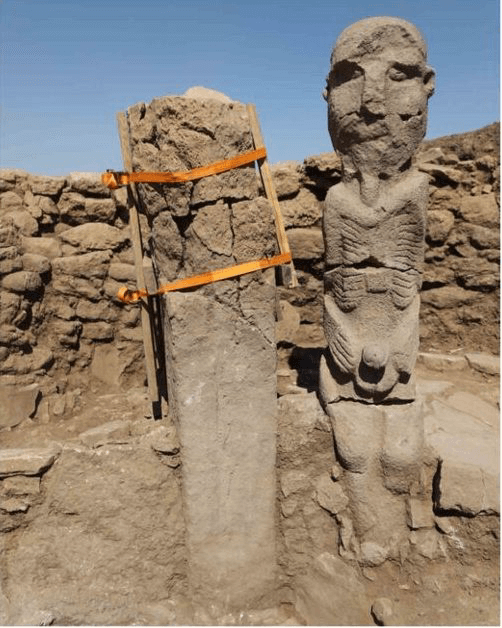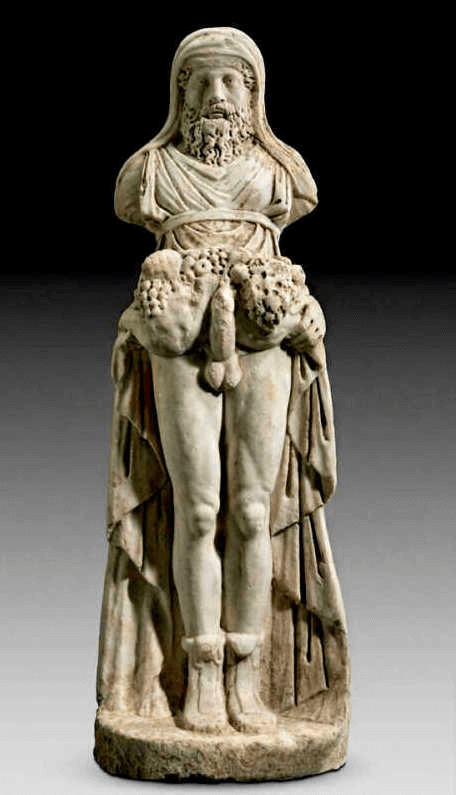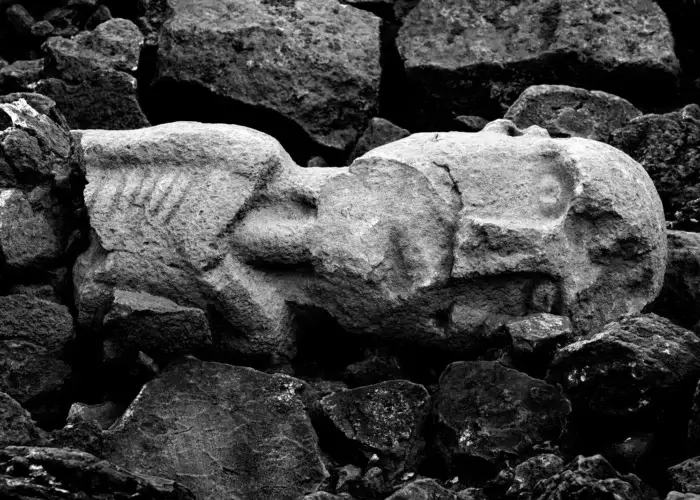Karahan Tepe Male Statue and its Resonance with Historical Phallic Imagery
The mysteries surrounding a man statue at Karahan Tepe that is 2.286 metres tall which was recently found on the site. This amazing discovery explores the rich fabric of symbolism that surrounds the human story as well as the aesthetic prowess of ancient civilisations. A glimpse into the interwoven spheres of the sacred and the earthly will be provided as we investigate the cultural resonances of this statue and the delicate threads that link it to the larger historical context.

The Karahan Tepe 12.000 Years Old Male Statue
A new statue that has been found at Karahan Tepe is 12.000 years old and measures 2.286 metres in height. The statue still exhibits incredible details, including the ribs and phallus as well as face characteristics like the eyes and nose, despite the fact that it has sustained damage over time. According to reports, this statue was anchored to the ground and was discovered inside a niche. This statue is a remarkable archaeological find because of its level of detail and accurate portrayal, which sheds light on the creative and sculptural traditions of the prehistoric civilisations that formerly lived in the area around Karahan Tepe.
Similar to those at Gobekli Tepe, the statues or pillars at Karahan Tepe are renowned for their T-shaped design. They have complex carvings, probably phallic totems, and animal figures. Along with the recently discovered humanoid statue, these artefacts shed important light on the region’s ancient civilisations’ aesthetic and sculptural practises, as well as their religious and spiritual beliefs.
Special constructions, obelisks, animal carvings, and phallic totems have all been unearthed during excavations. When the quarries for the T-shaped columns are included, the archaeological fills at Karahan Tepe extend over an additional five hectares, giving them a total area of almost 10 hectares.
Phallic Representations
Phallic representations have been a part of human culture and art for thousands of years, often embodying complex layers of meaning depending on the specific cultural and historical context. Here are some general themes often associated with phallic imagery:
1. Fertility and Procreation:
The phallus is a symbol of fertility and procreation in many cultures. It represents the male’s role in the creation of life.
2. Protection:
In some ancient societies, phallic symbols were used as amulets to ward off evil spirits or misfortune.
3. Masculinity and Power:
Phallic symbols can represent male energy, strength, and power. They can symbolize dominance or authority in some contexts.
4. Sexuality:
The phallus is a straightforward representation of male sexuality. In some cultures, phallic imagery might be used in a celebratory or ritualistic manner regarding sexual themes.
5. Life Force:
In some philosophical or spiritual contexts, the phallus is seen as a symbol of the life force or vital energy inherent in all beings.
6. Ritual and Religious Significance:
Phallic imagery can have ritual or religious significance. For instance, in Hinduism, the lingam is a representation of the god Shiva and is revered as a symbol of cosmic energy.
7. Humour or Satire:
In certain times and cultures, phallic imagery has been used for humour, satire, or to challenge social conventions.
The Statue of Karahan Tepe and the Greek God Priapus
The meaning behind a specific phallic representation, like the statue found in Karahan Tepe or the Greek God Priapus, would be deeply tied to the cultural, religious, and social norms of the society that created it. Understanding the broader context in which phallic imagery appears is crucial for interpreting its significance.

The statue found in Karahan Tepe and the depictions of the Greek god Priapus share some similarities as well as differences, primarily in their representation and cultural significance:
1. Representation:
Karahan Tepe Statue, the newly found statue is described as a humanoid figure with remarkable details such as facial features, ribs, and a phallus. It stands at 2.286 meters tall, which is quite significant in size.
Priapus: Priapus is often depicted as a dwarfish man with a large, permanently erect phallus. He is a rustic fertility god, protector of livestock, fruit plants, gardens, and male genitalia.
2. Cultural Significance:
Karahan Tepe Statue, the exact cultural significance of the Karahan Tepe statue is yet to be fully understood. However, it’s likely that it holds some spiritual or ritualistic significance given its placement within a niche and being fastened to the ground.
Priapus: Priapus was venerated as a god of fertility, garden, and agricultural abundance in ancient Greece. He was also considered a protective deity, warding off evil spirits and misfortune.
3. Artistic Style:
Karahan Tepe Statue, the statue showcases a level of realism in its representation, with a detailed carving of facial features and body anatomy. This might reflect the artistic sensibilities and the sculptural techniques of the ancient civilization that created it.
Priapus: The depictions of Priapus in Greek art are often exaggerated for comedic or grotesque effect, particularly his oversized phallus, which is symbolic of his fertility attributes.
4. Historical Context:
Karahan Tepe is an archaeological site in Turkey that predates the Greek civilization, and the statue reflects the ancient practices and beliefs of the people who lived in this region.
Priapus: Priapus reflects the mythological and religious beliefs of the ancient Greeks, and his depictions are a part of the larger Greek mythological narrative.
In conclusion, while there’s a similarity in the phallic representation between the Karahan Tepe statue and Priapus, the context, artistic style, and cultural significance surrounding these representations are rooted in different historical and cultural frameworks.

